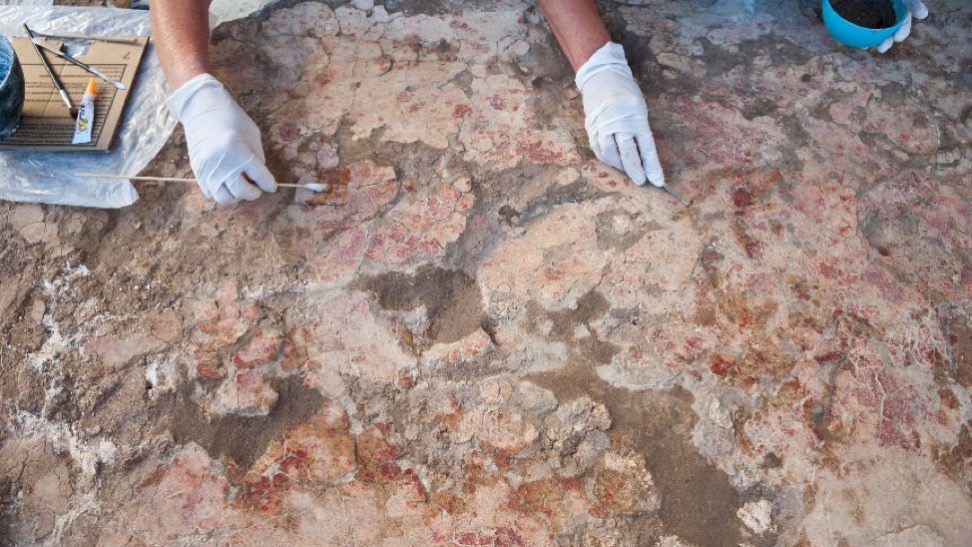
The Dredge in the context of the first peninsular Neolithic communities
The relevance of the project lies in the exceptional conservation conditions of the La Draga site and its relevance to the study of the neolitization process. The site has provided a unique record for the study of agricultural and livestock practices, as well as the technical processes and technological development of the first peasant communities of the Neolithic period. It has also allowed to obtain high resolution data on the environment and the impact that the arrival of these populations had on it in the Iberian Peninsula. The La Draga site is an exceptional case to study this period for several reasons. Because of its age, which places it among the oldest Neolithic sites in the northeast of the Peninsula. For the fact that it is an open-air settlement with an important extension and clear continuity of habitation. Finally, for providing a highly diversified archaeological record and with a state of conservation of organic matter unprecedented and unique in Europe.

Period
The chrono-cultural period covered by the project is the ancient Neolithic (facies Cardial) period of the Western Mediterranean. The radiometric data obtained by C14 frame the occupation of the settlement in the second half of the 6th millennium BC, with an initial phase between 5,300-5,100 BC and another more recent one between 5,100 and 4,900 BC.
Institution
Milà i Fontanals – CSIC (IMF-CSIC, Barcelona);
Museu d’Arqueologia de Catalunya (MAC, Barcelona);
Universitat Autònoma de Barcelona (UAB);
Museo Arqueològic Regional de Banyoles (MACB).
Web and social networks
http://www.asd-csic.es/
http://www.mac.cat/
https://www.uab.cat/web/seu-de-la-draga/la-seu-de-la-draga-1345766245716.html
https://www.museusdebanyoles.cat/arqueologic
https://twitter.com/La_draga_site
https://www.instagram.com/la_draga_site/
https://www.facebook.com/archaeologyladraga/
YOUTUBE: La Draga en càpsules
Principal Investigator(s)
Xavier Terradas Batlle
Milà i Fontanals (CSIC, Barcelona)
Antoni Palomo Pérez
Museu d’Arqueologia de Catalunya (MAC, Barcelona)
Raquel Piqué Huerta
Universitat Autònoma de Barcelona (UAB, Bellaterra)
Location
Banyoles, Girona.
LOCATION
RESULTS
The results of this project have meant a clear advance in scientific knowledge about the Neolithic:
- Better knowledge about Neolithic agriculture. We have one of the samples that provide a better knowledge of the agricultural practices of the beginning of the Neolithic in Europe. In addition to the large quantity of cereal seeds, among which naked wheat predominates, examples of agricultural tools such as digging sticks and sickles have been preserved. For the first time in Europe it has been possible to document directly from the archaeological record of the ancient Neolithic the work of the land with digging sticks and the type of harvesting practiced, aspects of agriculture that were usually inferred from ethnographic parallels.
- Better characterization of the cattle practices in the beginning of the Neolithic. The great quality and abundance of the faunal remains and the application of leading techniques in isotope and DNA analysis have made it possible to characterize at an extraordinary level how livestock practices were, both in terms of domesticated species and aspects related to their feeding, mobility, seasonal housing, types of use, phylogeny of domesticated species, etc.
- Better understanding of how the climate and early agricultural populations shaped the Neolithic landscape. Obtaining high-resolution proxies from palynological, anthracological, plant macros, dendrochronological, seed and wood isotopes analyses, as well as geoarchaeology, have contributed to characterize the Neolithic landscapes and climate during the Neolithic occupation at an incomparable level of detail. Thus, we know that oak groves would have occupied a large part of the region as a consequence of a cooler and more humid climate than the present one, suffering the impact of massive logging by Neolithic communities.
- Giving visibility to technological knowledge of Neolithic societies, which was totally invisible until now for the initial European Neolithic. Without a doubt, one of the most remarkable aspects of the site is the extraordinary conservation of wooden objects and plant fibers, totally absent in other archaeological contexts. Remains of baskets, ropes, handles, containers, bows, ladles, combs, spindles, architectural elements, shafts and arrowheads have been preserved, among those most remarkable elements.
PICTURES
- Archaeologists Discover Port Structures from Ancient Greek City of Asine (Ancient origins 11/03/2025) - 12 March, 2025
- LiDAR study reveals 5,000-year-old fortified settlements (Heritage daily 11/03/2025) - 12 March, 2025
- Unlocking the Secrets of Jersey’s Le Câtillon II: A Celtic Settlement Discovered Near the Enigmatic Hoard (Arkeonews 12/03/2025) - 12 March, 2025

























